Author: CHOCOMACH
June 27, 2025
11824
Comparative Study Report on Camellia oleifera Oil and Camellia japonica Oil
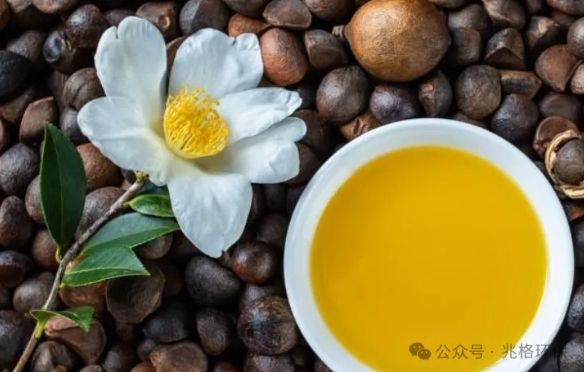
I. Introduction As high-quality oils derived from the seeds of Camellia plants, camellia oil and camellia oil have attracted much attention in the market in recent years. In daily life and the market, camellia oil is often called camellia oil, and the two names are easily confused, but strictly speaking, camellia oil is not completely equivalent to camellia oil. Camellia oil refers specifically to the oil extracted from the seeds of Camellia oleifera. Its raw material plant varieties are clear and single, and the planting areas are relatively concentrated. It is widely planted in the Yangtze River Basin and the areas south of it in my country, especially in Hunan, Jiangxi, Guangxi and other provinces. It is one of the main woody edible oils in China. The concept of camellia oil is broader. In addition to camellia seeds, its raw material sources also include seeds of other Camellia plants such as common camellia (Camellia japonica). Due to the wide variety of Camellia plants, the oils extracted from different varieties of camellia seeds have differences in composition, flavor, and quality, making the characteristics of camellia oil more diverse. The two have similar names and both have high nutritional value and unique flavor, but due to differences in raw material plant varieties, growth environment, processing technology, etc., there are differences in ingredients, sensory characteristics, nutritional value, market positioning and many other aspects. This report aims to deeply analyze the differences between camellia oil and camellia oil, provide comprehensive reference information for consumers, producers and related practitioners, and help the healthy development of the industry.
II. Sources of raw materials and distribution of origin
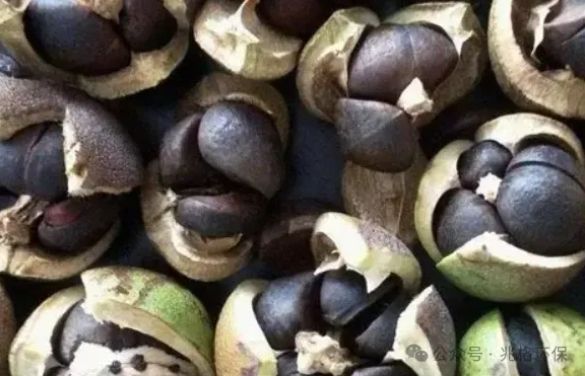
(I) Camellia oleifera Oil
1. Characteristics of raw material plants: Camellia oil is mainly derived from the seeds of Camellia oleifera. Camellia oleifera is an evergreen shrub or small tree, generally 3-8 meters tall, with rough bark, grayish white or brown. The leaves are alternate, slightly thin in texture, mostly ovate and oval, with obvious serrations on the edges. The flowers are small, 3-5 cm in diameter, with white and separate petals and golden stamens, and the flowering period is in autumn. The fruit is a capsule with a diameter of 3-5 cm, dark brown when mature, thick peel, and more seeds, generally 4-8 seeds.
2. Distribution characteristics of production areas: Camellia oleifera is widely distributed in the Yangtze River Basin and the areas to the south of it in China. Hunan, Jiangxi, Guangxi and other places are the core production areas. These areas have a warm and humid climate, with an average annual temperature between 16-21℃, an annual precipitation of 1200-2000 mm, acidic soil, and a pH value between 4.5-6.5. which is very suitable for the growth of camellia oleifera. For example, Qiyang and Daoxian in Hunan have become important suppliers of camellia oil in China through the construction of large-scale camellia oil planting bases. As the leading province in the national camellia oil industry, Hunan ranks first in the country in terms of the area and output of camellia oil forests.
3. Current status of industry scale: With the increasing attention and investment in the camellia oil industry in various places, the scale of camellia oil planting continues to expand. By the end of 2024. the national camellia oil planting area has exceeded 80 million mu. On the basis of 72.1961 million mu in 2023. 7.125 million mu of low-yield forests will be newly planted and transformed in 2024. Among them, the main production areas such as Hunan, Jiangxi and Guangxi have significant advantages. The total area of oil tea forests in Hunan Province reaches 23.71 million mu, the total area of oil tea forests in Jiangxi Province reaches 17 million mu, and the planting area of oil tea in Guangxi reaches 10.5 million mu. The planting area of these three provinces and regions accounts for more than 60% of the total area in China.
(II) Camellia japonica Oil
1. Characteristics of raw materials: The raw materials of camellia oil are relatively diverse. In addition to some oil tea varieties, it also includes seeds of other camellia plants, such as common camellia (Camellia japonica). Common camellia plants are generally 1-6 meters tall, with an oval or round crown and smooth bark. The leaves are alternate, leathery, mostly oval or oblong, with fine serrations on the edges, and the surface is dark green and shiny. The flowers are large and bright, with a diameter of 5-12 cm. The petals are connected at the base and the colors are rich. The flowering period is in winter and spring. The fruit is a capsule, spherical, 2-3 cm in diameter, and the peel becomes lignified and cracked when mature, with 1-3 seeds in general.
2. Distribution characteristics of origin: Its origin is also concentrated in the southern subtropical regions, such as Fujian, Zhejiang, Yunnan and other places. The high mountain tea planting base in Zhangping, Fujian, and the standardized tea production bases in Yuhang and Changshan, Zhejiang, are all producing tea, and some camellia seeds are also used to make camellia oil. The climatic conditions and soil environment in these areas provide suitable conditions for the growth of camellia plants, but compared with the main production areas of oil tea, the planting scale is relatively small.
3. Current status of industry scale: Due to the relative difficulty in obtaining raw materials, the planting scale and output of camellia oil are lower than those of oil tea oil. Limited by the scale of planting and the difficulty of obtaining raw materials, the national camellia oil output is lower than that of oil tea oil. Combined with the public data and industry experience of some regions, the national camellia oil output in 2024 may be around 100.000-200.000 tons. Although it is small in scale, it has unique qualities, such as light flavor, relatively higher nutritional content (some varieties of camellia oil have advantages in specific nutritional elements) and good market publicity. In the high-end edible oil market, camellia oil has a market share of about 5%-10% due to its high quality and unique nutritional content. The main consumer groups are middle- and high-end consumers who pay attention to health and pursue high-quality life.
III. Ingredients and nutritional value
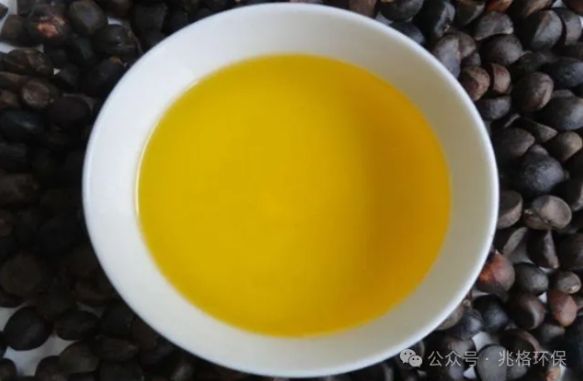
(I) Camellia oleifera Oil
1. Main nutrients: Camellia oil has a very high content of unsaturated fatty acids, usually up to 80%-90%, among which oleic acid (monounsaturated fatty acid) is particularly prominent, accounting for about 75%-83%. In addition, it is also rich in nutrients such as vitamin E, squalene, and camellia glycosides. In every 100 grams of camellia oil, the vitamin E content can reach 100-120 mg, and the squalene content is about 150-200 mg.
2. Nutritional efficacy analysis: High levels of unsaturated fatty acids help lower blood cholesterol and triglyceride levels and reduce the risk of cardiovascular disease. Studies have shown that long-term consumption of oils rich in oleic acid can reduce low-density lipoprotein cholesterol (bad cholesterol) in human blood and increase high-density lipoprotein cholesterol (good cholesterol), thereby improving blood lipid status. Vitamin E, as a powerful antioxidant, can effectively remove free radicals in the body, reduce oxidative damage to cells, help prevent aging, protect cardiovascular health, and nourish the skin, keeping the skin elastic and shiny. Squalene has the effects of improving human immunity, promoting blood circulation, and anti-oxidation. In terms of improving immunity, it can enhance the body's resistance to pathogens and help the body resist disease invasion; in terms of promoting blood circulation, it can improve blood circulation and efficiently transport nutrients to various tissues and organs.
3. Ingredient stability study: Due to the relatively concentrated planting area of camellia oleifera, the relatively uniform varieties, and the continuous promotion of standardized planting and processing technologies in recent years, the ingredient stability of camellia oleifera oil is relatively high. Under suitable storage conditions (temperature 10-25℃, dark and dry), the fatty acid composition and nutritional components of camellia oil remain basically stable within 1-2 years, and indicators such as acid value and peroxide value change little.
(II) Camellia japonica Oil
1. Main nutrients: The fatty acid composition of camellia oil is similar to that of camellia oil, but the oils produced from different varieties of camellia will have different composition ratios. The unsaturated fatty acid content of some camellia oils is slightly lower than that of camellia oil, at around 70%-85%, and the content of nutrients such as vitamin E and sterols also fluctuates due to different raw materials. Relevant research and data show that the content of phytosterols in camellia oil is relatively high, and some brands of camellia oil contain about 600 mg per 100 g. Other studies have shown that the new national standard for camellia oil defines the content of phytosterols at 100-4000 mg/kg, which is equivalent to 10-400 mg/100 g after conversion. Based on various data, the sterol content of camellia oil is roughly in the range of 100-600 mg/100 g. Phytosterols can compete with cholesterol, reduce the body's absorption of cholesterol, and thus help lower blood cholesterol levels, which is of great significance to cardiovascular health; at the same time, it also plays a positive role in anti-inflammatory, immune regulation, and antiviral effects.
2. Nutritional efficacy analysis: Camellia oil also has good antioxidant and health functions, and has a certain effect on improving human blood circulation and promoting metabolism. The sterols it contains can inhibit the body's absorption of cholesterol, which helps to lower the cholesterol level in the blood; a variety of antioxidant substances work synergistically to remove free radicals in the body, reduce cell oxidative damage, and delay aging.
3. Ingredient stability study: Due to the variety of raw materials and scattered planting areas, there are certain differences in the stability of ingredients in oils produced from camellias of different origins and varieties. Some small-scale planted or non-standardized camellia oils may have problems such as increased acid value and increased peroxide value during storage, resulting in loss of nutrients and quality degradation. However, through the application of standardized planting and modern processing technology, the stability of camellia oil ingredients can be effectively improved.
IV. Sensory characteristics and quality
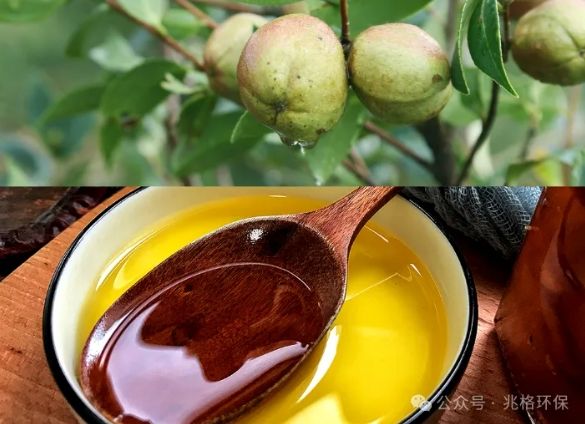
(I) Camellia oleifera Oil
1. Color: High-quality camellia oil is light yellow to golden yellow, clear and transparent. This is because its refining process removes impurities and pigments, making the oil present a pure color. Under different lighting conditions, the color of camellia oil will change slightly, but it always remains bright and uniform.
2. Smell: It has a unique camellia seed fragrance and a rich flavor. This aroma is the result of the smell of the camellia seed itself being retained during the processing process, giving people a natural and fresh feeling, and during the cooking process, the aroma can blend with the ingredients to add flavor to the dishes.
3. Taste: The taste is mellow and has a light aftertaste. After entering the mouth, you can feel the delicate texture of the oil, and the aftertaste is long, without a greasy feeling. This mellow taste is more obvious when it is served in cold dishes or eaten directly. 4. Quality stability: In recent years, with the improvement of the standardization of the oil-tea industry, the quality stability of oil-tea oil has been effectively guaranteed. From planting, picking, processing to storage, each link has corresponding standards and specifications, which makes the quality of oil-tea oil in the market relatively consistent, and consumers can buy products with stable quality.
(II) Camellia japonica Oil
1. Color: The color is relatively lighter, mostly light yellow, and the color will change to a certain extent when the degree of refining is different. Camellia oil with a high degree of refining is lighter in color and has better transparency; while camellia oil that has not been deeply refined may be slightly light yellow or slightly green, which is related to the variety of raw materials and processing technology.
2. Smell: The smell is relatively elegant, and some varieties may have a slight tea fragrance. This elegant smell does not cover up the taste of the ingredients themselves when cooking some light dishes or making cold dishes, but can play a role in enhancing the fragrance.
3. Taste: The taste is relatively refreshing and smoother. Compared with the mellow taste of camellia oil, camellia oil has a lighter taste and stays in the mouth for a shorter time, giving people a refreshing feeling, which is more suitable for consumers who pursue a light taste.
4. Quality stability: Due to the complex sources of camellia japonica oil raw materials, the oil extracted from camellia seeds of different regions and varieties has different qualities. Camellia japonica oil produced by some small workshops may have problems such as residual impurities and excessive acid value due to backward processing technology, which affects the quality stability. However, large formal enterprises can produce camellia oil products with more stable quality through strict quality control and advanced processing technology, such as the use of fully automatic horizontal hydraulic oil presses and continuous low-temperature cold pressing processes.
V. Market status and application areas
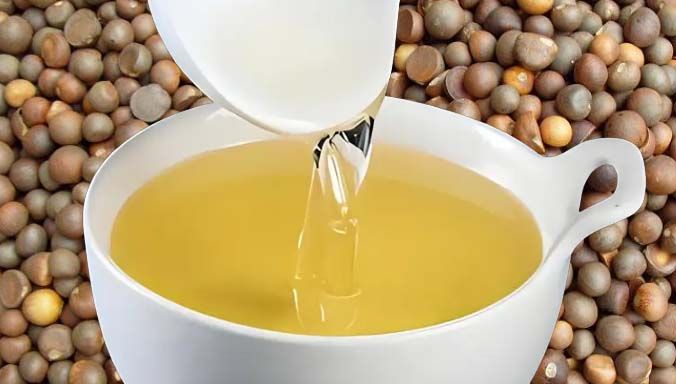
(I) Camellia oleifera Oil
1. Market price analysis: With large-scale production and high market awareness, the price range is relatively affordable. The price of ordinary quality camellia oil is about 50-100 yuan per catty, and the price of high-quality brand products will be higher. In different sales channels, prices will fluctuate.
2. Market share: In the domestic edible oil market, the market share of camellia oil is gradually expanding. As of 2024. according to data from the China Forestry Industry Federation, camellia oil accounts for about 3.5% of the domestic edible oil market, and it is showing an upward trend year by year. In recent years, with the country's increased support for the camellia industry and consumers' increased awareness of healthy oils, the market share of camellia oil has increased significantly. In 2022. the share was only 2.3%, and it rose to 3% in 2023. In the main camellia producing areas such as Hunan and Jiangxi, camellia oil has a higher market share. For example, in some areas of Hunan Province, the market share of camellia oil exceeds 15%, and it has become one of the important choices for local residents' daily edible oils.
3. Application field expansion: Mainly used as edible oil, it is widely used in home cooking and catering industries. Its good stability and nutritional properties make it suitable for various cooking methods, such as frying, stir-frying, deep-frying, steaming, stewing, etc. In home cooking, consumers are increasingly inclined to choose camellia oil to meet the needs of healthy diet; in the catering industry, some high-end restaurants have also begun to use camellia oil to improve the quality and taste of dishes. In addition, due to its unique ingredients, camellia oil is also used in cosmetics, pharmaceuticals and other industrial fields, such as moisturizers in skin care products and nourishing ingredients in hair care products.
(II) Camellia japonica Oil
1. Market price analysis: Due to the relatively difficult acquisition of raw materials and limited production, the market price is generally high, ranging from 80 to 150 yuan per catty or even higher. In the high-end edible oil market, camellia oil has obvious price advantages due to its high quality and unique nutritional ingredients. Some camellia oil products that have been organically certified or have special origin labels are priced as high as hundreds of yuan per catty.
2. Market share: Although camellia oil has a relatively small share in the domestic edible oil market, it occupies a certain position in the high-end edible oil market segment. At present, due to the complex source of camellia oil raw materials, market share statistics are somewhat difficult, and the data given by different research institutions and statistical channels are slightly different. However, from the overall situation of the industry, camellia oil occupies a certain share in the high-end edible oil market, about 5% - 10%. This data reflects that camellia oil is popular among middle- and high-end consumer groups who pursue high-quality life and pay attention to healthy diet due to its unique qualities, such as rich unsaturated fatty acids, antioxidants and other nutrients, elegant flavor and good market publicity. In the high-end edible oil segment, camellia oil competes with high-end oils such as olive oil and linseed oil. Although it accounts for a relatively small share of the overall edible oil market, it has gradually expanded its own market space in the high-end market with its differentiated advantages. With the deepening of consumers' understanding of healthy oils and the trend of consumption upgrading, this share is expected to increase further.
3. Application field expansion: In addition to being a high-end edible oil, it is also often used to make health products and beauty and skin care products. In the field of health products, camellia oil is made into soft capsules and other products because it is rich in unsaturated fatty acids, antioxidants and other nutrients. It is used to regulate blood lipids and enhance immunity; in the field of beauty and skin care products, the moisturizing, moisturizing and antioxidant properties of camellia oil make it an important raw material for many skin care products. For example, camellia oil ingredients are added to products such as creams, lotions, and essences, which are favored by consumers.
VI. Conclusion Although both tea oil and camellia oil are extracted from seeds of the genus Camellia, they differ in their raw material sources, production methods, and production methods.

Service Tel:
+86 136 0865 6963
+86 199 3799 5959
0086 0379-61127277

Email:
chocooilpress@gmail.com info@chocomach.com

Wechat:


WhatsApp:
+86 199 3799 5959